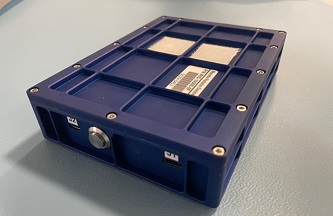
Kennedy Space Centre (KSC), Cape Canaveral, Florida 15th March 2025.
The IRIS (Large area, wearable Ionizing Radiation dosimeters for real-tIme crew perSonal monitoring) payload developed for the Italian Space Agency (ASI), was launched to the International Space Station (ISS) on March 15, 00:03 Italian time (23:03 GMT on March 14) from the Kennedy Space Center in Cape Canaveral and reached the ISS at 05:00 on March 16.
The payload is a dosimeter that the astronaut can wear and has the objective of monitoring in real time the amount of ionizing radiation received during the daily activities of astronauts. Ionizing radiation present in space is considered by NASA to be one of the five major risks to be mitigated to allow human exploration of the Solar System. The radiation data acquired by the sensors developed for IRIS are saved on the internal memory of the payload and then transmitted to ground for their analysis. The payload has been conceived to allow real time transmission to the flight or ground operations center the dose received by the wearer, allowing an immediate alarm to be activated in the event of overexposure. During the stay on the ISS, three sessions of use of the IRIS dosimeter are planned, each lasting one week. Kayser Italia has developed the mechanics, electronics and software necessary for the creation and use of the payload. The sensors, usable for a single session and then replaceable, were developed by the National Institute of Nuclear Physics – TTLab using innovative materials: organic semiconductors and perovskites.
At the end of the test on the ISS, the payload will be brought back to Earth.